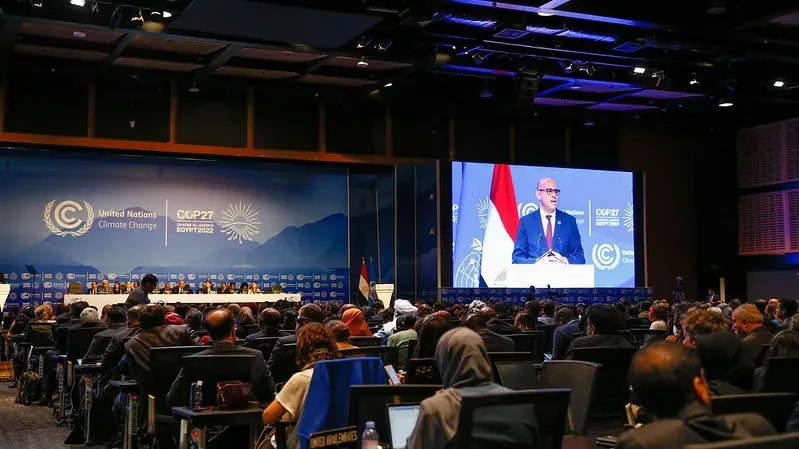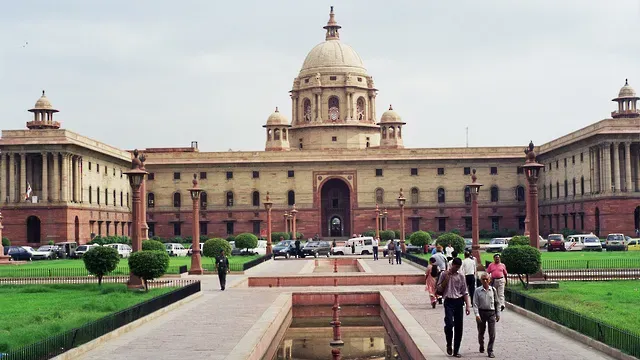Why COP27's biggest wins might come from the sidelines
And what to watch over the coming two weeks

Welcome to today’s edition of Lights On, a newsletter that brings you the key stories and exclusive intel on energy and climate change in South Asia.
Today I am writing from Sharm El Sheikh in Egypt, host of this year’s UN Climate talks COP27. I will post regularly over the coming two weeks to keep you abreast of the most important developments, with an eye on South Asia. Subscribe now to keep up to date:
It’s taken more than three decades to put finance for climate change compensation in an official COP agenda – but we got there. After the conversation over loss and damage finance stalled last year in Glasgow, developing countries and civil society groups have come prepared, and pushed for the issue to be taken seriously for months before the talks.
#LossAndDamage Finance agenda for #COP27 adopted, not without rich countries bullying poorer nations to agree to a language to protect historical polluters from compensation & liability.
Nevertheless, a new chapter to fight for #LossAndDamageFinance begins now!#ClimateJusticeNovember 6, 2022
The exceptional nature of this year’s diplomatic progress mirrors the impacts of the natural disasters that have occurred over the past 12 months - from a summer of heatwaves across South Asia to the most recent floods in Pakistan - which we now know carry the footprint of climate change. The fervour permeating the diplomatic corridors at the climate talks feels deeply intertwined, this year more than ever, with the grief of millions who are counting lost homes and lives.
Not only are these two sides of the climate change battle evolving in parallel, but they share a complexity that too often remains misunderstood. The summer floods in Pakistan that killed over 1700 people, scientists have confirmed, were made more likely by the presence of climate change. But many in the country lament the lack of preparedness on the part of the government: “We were expecting these floods, and there is a lot of debate on whether the government is trying to pin this all on climate change, but they could have avoided the humanitarian disaster,” as my former colleague Farahnaz Zahidi put it. During the hottest months of the heatwave in India my family was lucky to keep the AC on, but many struggled with planned brownouts - a reduction of energy flow in certain areas enacted to prevent a large-scale grid collapse. According to analysts I spoke to at the time, the disruptions, which affected people when they needed power the most to regulate temperatures, spoke of the poor preparedness of the Indian grid system in the face of unpredictable extremes.
The same dynamic is unfolding at COP27: it’s not enough to demand change, we need to understand and navigate how the climate story plays out in the global political system - particularly in times of war, energy crisis and political instability. This doesn’t mean settling for small wins, but focussing on scaling up what works. Perhaps the number one goal of this year's 'implementation COP’ is the creation of a loss and damage financial facility which will pool and distribute money for climate reparations. But even if the platform is approved, it will be years before the first dollar reaches the ground. And if the 2022 weather trends are anything to go by (and science tells us that they unequivocally are) tomorrow’s global environmental damages may lead to financial collapse before we even start paying for today’s. So yes, the world needs that one win, but it’s the ones you won’t hear about that really matter.
We know that capital is there - and we see that countries and banks are ready to fork it out in case of emergency. Why is it not moving is the real question. Many analysts will say - on and mostly off the record - that any project in the developing world ends up being more expensive than if it was set up in a rich country, because you don’t have things like robust insurance systems, predictable policies and well established infrastructure such as roads and power grids to support new development.
In India, energy transition plans hinge heavily on renewable development - but while the country receives about 750 billion INR ($9.4 billion) in clean energy investments, its goals would cost three times as much. India is also the world's top provider of carbon credits, but the quality of its tokens, like in much of the rest of the world, is still very uneven. Once the international community sets more stringent targets, the carbon pricing economy may take a hit.
Better insurance systems, blended finance (which uses development money to unlock private investments), the role of multilateral development banks and more robust monitoring systems may succeed in removing some of the risks that keep businesses away from the developing world. All of these will be discussed on the sidelines of the big debates, and are less likely to make it to the front pages. But they are our best bet to chip away at the climate finance problem on time - and learning about what works may empower your consumer and investment choices too. More on this, and much else, from Sharm El Sheikh for the coming two weeks.
That's all for today! If you enjoy this newsletter, please share it with a friend or two:



